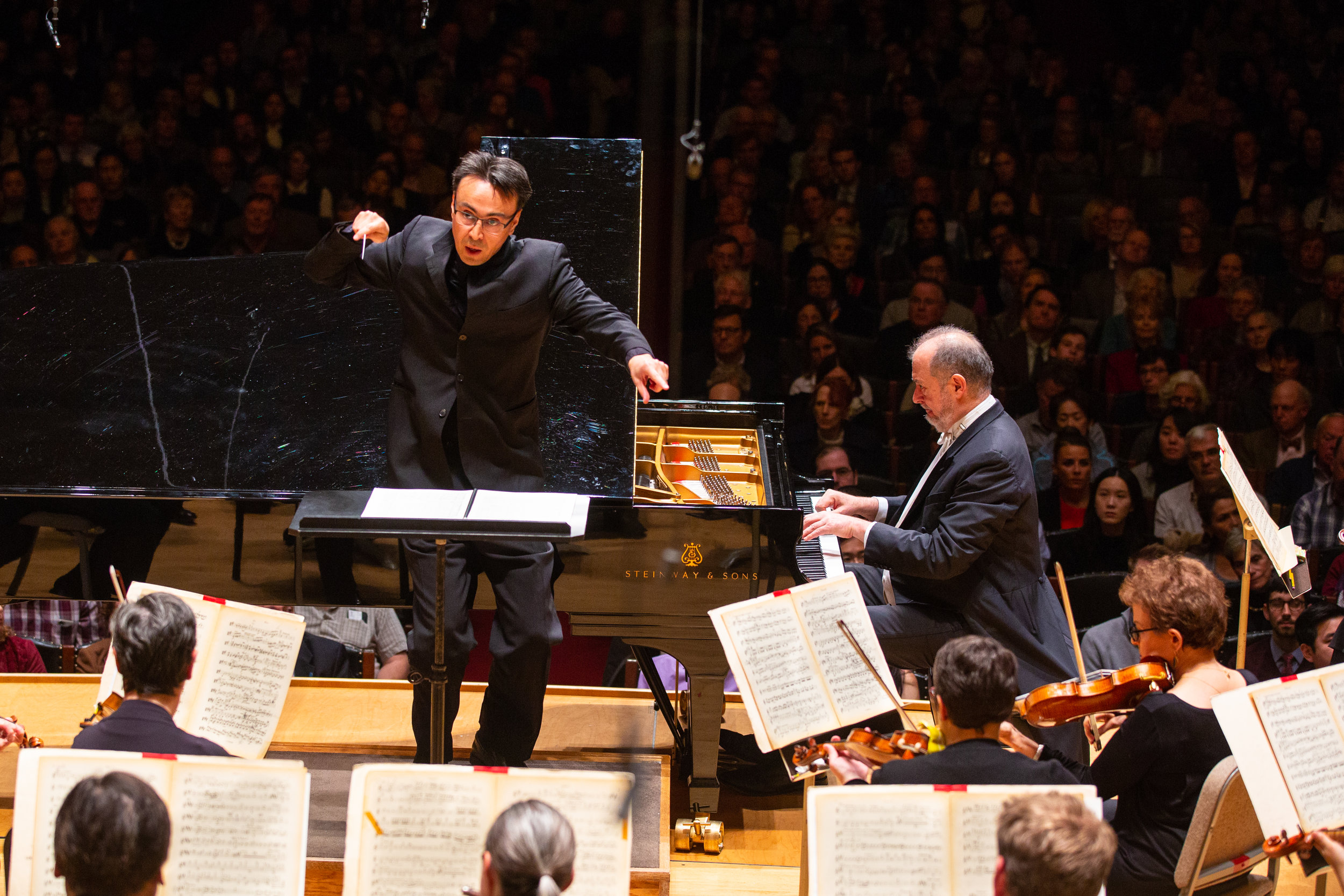Ken-David Masur leads the Boston Symphony Orchestra, with soloist Garrick Ohlsson, in Rachmaninov’s first piano concerto. Robert Torres photograph
Poor Sergei Rachmaninov. Gone all these years, and his Prelude still comes back to haunt him.
The great pianist and composer grew weary of performing his brief, thunderous Prelude during his own lifetime. Audiences couldn’t stop themselves asking for it.
And on Thursday evening at Symphony Hall, it wasn’t even on the Boston Symphony Orchestra program. But when this audience demanded an encore from pianist Garrick Ohlsson after a performance of Rachmaninov’s first piano concerto—sure enough, Ohlsson obliged with the Prelude.
With Ohlsson, you trust the artist. His precision in the concerto—led in these performances by Ken-David Masur—was everything one expected.
The F-sharp minor concerto has themes—but not the sweeping, memorable ones that populate the later concertos, or the Prelude for that matter. Despite the composer’s multiple revisions, it still has a technical, architectonic feel. Ohlsson executing these passages almost clinically, but also reached in to draw out emotions, especially in the slow movement.
He had help. The theme in the second movement Andante works its way out from a horn introduction (archly segued by Richard Sebring), through the soloist for development, finds its way into a bassoon duet, and then works through more horns and winds. It has a measured grace, but in the hands of this soloist sounded deeply engaged.
Masur continually impresses. He began the program with John Harbison’s lively “Remembering Gatsby,” a pastiche “drawn” from his opera. “Drawn” in quotes only because it came before the fact: when it looked like Harbison’s Gatsby opera would never come about, the composer crafted this quasi-overture, so that his musical ideas would have a life. That was in the 1980s, but of course the opera subsequently did come to life.
This short work (about ten minutes) has real energy, and lots of moving parts. Harbison wrote a genuine Roaring-20s melody that works as a linchpin, first fully developed (after a harsh, almost scary introduction), then recurring as snippets. It swings, it dances, and makes one feel deep down that an opera should follow.
This program marks the BSO’s beginning of the Harbison 80th birthday celebration, to be continued in January with more substantial works (the second symphony, along with a chamber players program dedicated to his work). Lots of the composer’s music will be played all over town by other ensembles, and a world premiere just happened in Minnesota as well. And that’s a good thing.
Excerpts from Prokofiev’s ballet score to “Romeo and Juliet” filled the second half of the program. It’s impossible not to enjoy these settings, and nearly impossible not to visualize the ballet if you’ve seen it. Pictorial, alluring, the settings really are chamber music, realized one scene at at time by the orchestra.
Masur drew out the best from the ensemble. Ten scenes in all have struggles, dances, romance and death, illuminated with scherzo-like movements (a street scene, taken from the opening of the ballet); a minuet—stately and refined, with its posturing between Montagues and Capulets fully explored; the lush balcony scene; and the highlight (musically)—the death of Tybalt at Romeo’s hand.
Masur could hardly be different on the podium than his father—at least from a physical standpoint. Where Masur père seemed to get great performances simply shaking his sleeve, Masur fils works all the details: a sturdy downbeat, reliable without being excessive; coupled with detailed instructions, mostly from the left hand, for dynamics, entrances and tension. It’s a pleasure to watch, and a greater pleasure to listen to.
This BSO program repeats this afternoon, then Saturday and Tuesday evenings. bso.org; 888-266-1200.


